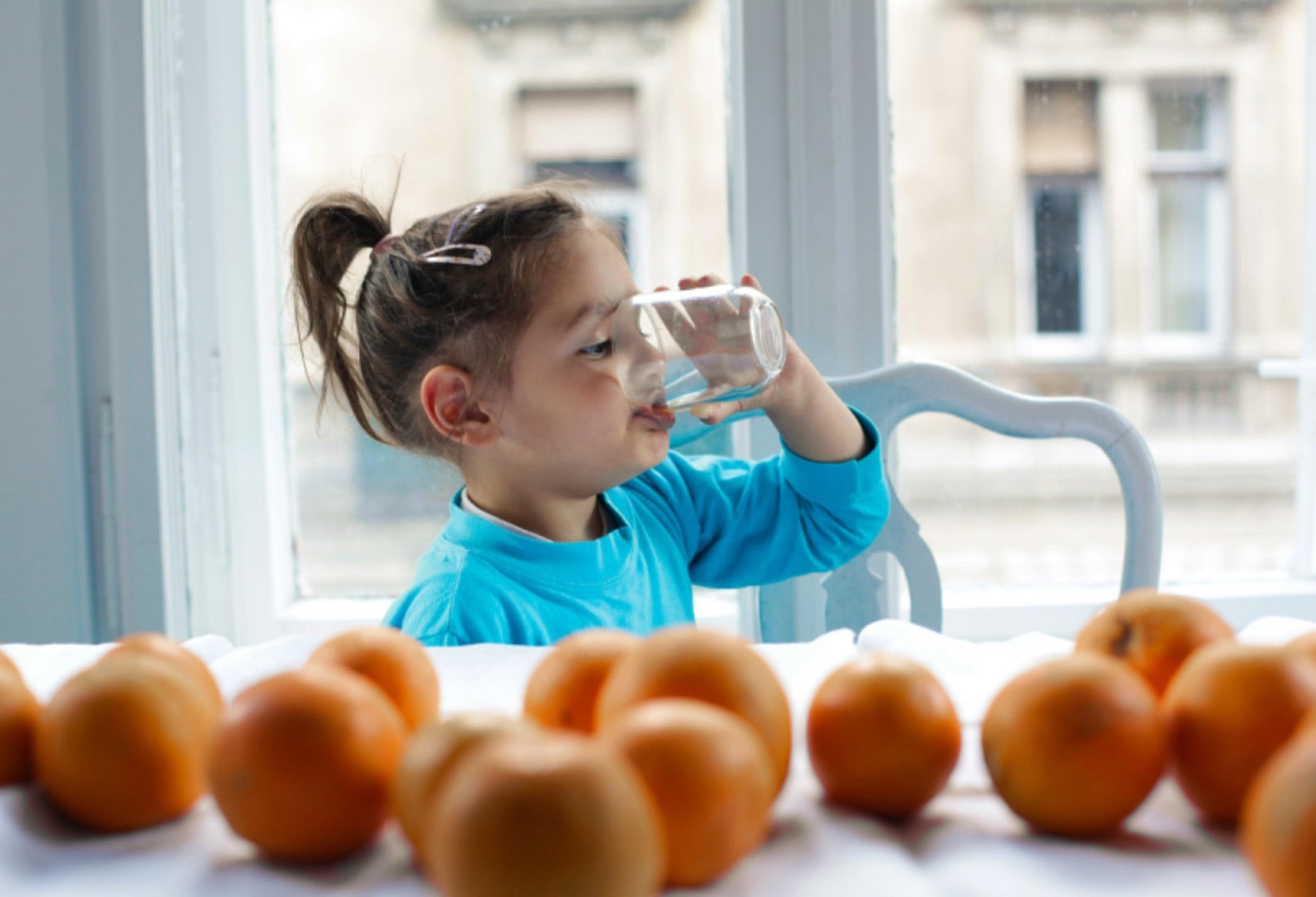Your Cart is Empty
Continue shoppingThe Four 'P' Fruits for Kids Gut Health and Constipation
Medically Reviewed by May Zhu, RDN | Published October 28, 2023
share this article

Did you know that an estimated 95% of kids do not consume the recommended daily intake of fiber? [3]. This is one of the reasons why constipation remains a common issue among kids, with studies showing that up to 25% of visits to pediatric gastroenterologists globally are due to functional constipation [4]. While the strategies for gut health may look different from kid to kid, as a Registered Dietitian I always like to recommend a “food first” approach to supporting a kid's gut health. An easy way to remember which fruits help with constipation relief is to remember the “4 P’s” - prunes, pears, peaches, and plums. Let’s review how these four fruits can support a healthier and happier gut.
Prunes
One serving of dried prunes (about 5 prunes) contain 3 grams of fiber. Studies have found that prune juice specifically contains natural sugars like sorbitol, which can provide a safe natural food therapy option to help support symptoms from chronic constipation [5]. The American Academy of Pediatrics concludes that 100% percent fresh fruit juice can be a healthy part of the diet of kids older than 1 year when consumed as part of a well-balanced diet.
While the sorbitol in prune juice does have laxative properties, it’s important to note it might not work for everyone. Prune juice is generally recommended for kids ages 1 and up. The recommended prune juice serving size for kids ages 1 and up is up to 4 ounces per day. For little ones less than 12 months of age, it’s best to check in with your pediatrician first to see if it’s the right option to include for constipation support.
Begin Health Expert Tip
When reviewing prune juice options at the store, look for “no sugar added” options to keep added sugar intake low.
- Buy Now
Join the
Happy Gut Club
Daily reads to help your little ones lead happier and healthier lives.
Pears
One medium pear provides around 6 grams of fiber. Pear juice also contains specially sorbitol and fructose, which can help increase frequency and water content in stools [6]. In addition, pears contain both soluble and insoluble fiber, which helps soften the stool and create bulk for easier bowel movements. Consuming pears with the skin still in-tact can help retain the fiber content naturally found in the fruit.
According to the USDA MyPlate recommendations, it’s suggested that toddlers eat ½ to 1 serving of fruit per day and kids 2-4 years should aim for 1 to 1 ½ servings. As kids get older, their fruit needs can increase to up to 2-3 servings per day. A medium pear is equal to one serving of fruit and provides all the health benefits to support our little ones as they continue to grow.
Peaches
Peaches can be introduced into kiddos’ diet when they start solids, generally around 6 months. Peaches contain polyphenols, which can increase the number of beneficial gut bacteria in the microbiome such as lactobacillus and bifidobacterium [9]. Both Lactobacillus and bifidobacterium are two major health beneficial probiotics and provide gut health benefits including relief from symptoms caused by diarrhea and constipation, and support for irritable bowel symptoms. The skin on peaches are also particularly high in antioxidants, which are beneficial health compounds that support in reducing inflammation from bodily stress that works to keep kiddos healthy [10].
Plums
Plums are high in insoluble fiber which can help support softening of the stool [8]. Plums can be introduced into an infant's diet as early as 6 months, whenever your little one begins to incorporate solids into their diet. The naturally occurring sorbitol found in plums can provide a laxative effect to help with hard stools and the symptoms from constipation [7]. Plums contain 89% water in a serving, which means it has a high water content to help your little ones also reach their daily hydration recommendations. Evidence from studies show that a lower water intake is associated with a higher risk of intestinal constipation.
Fiber Content in the “P” Fruits
|
Fruit |
Fiber per serving |
|---|---|
|
Prunes (¼ cup) |
3g |
|
Pears (1 medium) |
6g |
|
Peaches (1 small) |
2g |
|
Plums (1 small) |
1g |
Incorporating the Four 'P' Fruits into Your Kid's Diet
Now that we’ve reviewed the four 'P' fruits that can support constipation symptoms in kids, let's discuss how to incorporate them into your little one’s diet.
-
Prunes: Offer your kiddo a few prunes as a snack or chop them up and add to their morning oatmeal or yogurt.
-
Pears: Serve sliced pears as a healthy snack or blend them into smoothies.
-
Peaches: Enjoy peaches as is or freeze peach slices and offer them as a sweet, frozen snack option.
-
Plums: Enjoy plums as a snack alone or add them to fruit salads.
Remember to consult with a Pediatrician or Registered Dietitian before making significant dietary changes, especially if your kid has chronic constipation or other health and dietary concerns.
Summary
An easy way to remember the fruits for constipation support is to think about the “Four P’s” - fruits such as prunes, pears, peaches, and plums. The “P” fruits play a vital role in supporting constipation relief in kids by providing daily dietary fiber, vitamins, and essential nutrients that support regularity and overall digestive health.











